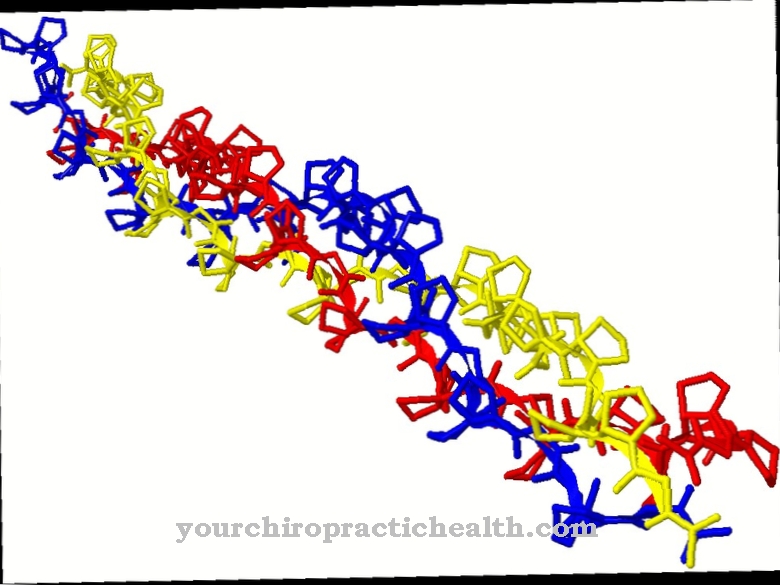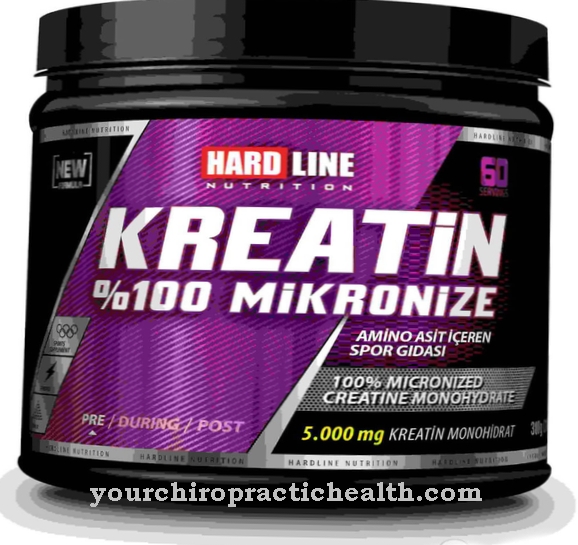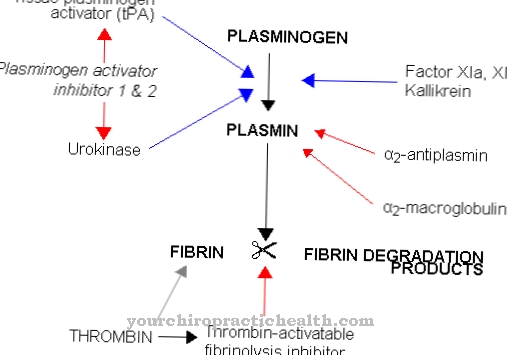At Estradiol it is a sex hormone. Its German name is Estradiol and it is one of the most important natural estrogens alongside estrone and estriol. Its chemical molecular formula is C18H24O2.
What is estradiol?
The hormone is used as a hormone replacement in women. This applies to women who complain of symptoms due to a lack of estrogens (female sex hormones). This can be the case in menopausal women.
In some cases, these symptoms persist even after the menopause. Younger women can also be affected if, for example, their ovaries have been removed. In addition to its sexual function, it also has an effect on human bones. Chemical names of the hormone are 17β-estradiol and 1,3,5 (10) -estratriene-3,17β-diol. Its derivative, ethinylestradiol, is one of the components used in birth control pills.
Function, effect & tasks
Estradiol performs various tasks in the body. Estrogens are responsible for the growth of the female sexual organs. This applies to the secondary genital organs as well as to the fallopian tubes, uterus, ovaries and vagina.
They also have an impact on the uterus during menstruation, as they stimulate the endometrium to grow. They stimulate blood flow and have an impact on the epithelium of the vagina. The hormone also has an impact on bone density and, depending on its concentration, can favor tumors. The risk of breast or ovarian cancer increases with the concentration of estradiol in the body. An elevated level in men can lead to feminization and enlargement of the prostate.
When used as a preparation, estradiol is used to compensate for the lack of estrogen and relieve symptoms of menopause. These include hot flashes, depressive moods, itching and inflammation. An increased risk of bone fractures is also possible.
The preparations can be used to treat vaginal infections and the symptoms of a dry vagina. Skin diseases can also be treated with estradiol. Estrogens are one of the reasons birth control pills are prescribed for women with skin problems. They can also relieve discomfort during sexual intercourse and can be used against itching in the vagina and anus. It is also used to curb the regression of the genital organs. In addition to the possible uses in the area of the genital organs, the skin or bones, the hormone is also used in the treatment of open legs.
Examples of drugs that contain estradiol are Estrifam, Merimono, and Gynokadin. In the body, estradiol stimulates the production of certain proteins that only function to a limited extent due to lack of estrogen. This includes the inhibition of sebum production or the formation of vaginal fluid.
Education, occurrence, properties & optimal values
The body's own estradiol is produced in the ovaries. The male testes and adrenal cortex also produce the hormone in smaller quantities. Testosterone can also be converted to estradiol in fat cells. The corresponding hormone level in a woman going through menopause can be compared to that of a man. Therefore, an additional treatment with estradiol can be carried out to combat any symptoms that may arise.
During menstruation, the concentration of estradiol is around 50 pg / ml. While the follicle is forming, it briefly increases to 200 pg / ml, but decreases again when ovulation occurs. If you are not pregnant, the amount of estradiol will return to normal as soon as your period is over. During pregnancy, the hormone levels of estrogens rise sharply and can grow up to a hundredfold by the time the child is born.
Diseases & Disorders
Estradiol should not be used if there is hypersensitivity to the active ingredient. The same applies to growths of the uterine lining, unexplained bleeding or breast or cervical cancer. In addition, preparations with estradiol should not be taken if veins or arterial blockages have previously or currently been present or if the person concerned suffers from diseases with accelerated blood clotting.
If hypertension, migraines, liver diseases or autoimmune diseases are present, treatment with appropriate preparations should be carried out with reserve and supervision. Taking into account any risks, caution is also advised in the case of epilepsy, asthma, gallstones, diabetes and otosclerosis (disease of the inner ear bones). Children or pregnant women should not be treated with preparations containing estradiol.
Apart from that, estradiol can lead to undesirable side effects. The most common ones include feelings of tension in the chest, unwanted growth of the sexual organs and an increase in sex drive. Vaginal inflammation can also occur, as can weight changes, mood swings and indigestion. In general, digestive problems are possible. These include bloating, abdominal pain, and diarrhea. In addition, estradiol can affect the psyche. Depressive moods, nervousness and drowsiness can occur.
External use of the hormone can lead to hair loss, chest pain, spotting and joint pain, among other things. Preparations containing estradiol should be discontinued if blood pressure rises sharply and liver function deteriorates. This also applies to jaundice or the onset of migraine headaches. Immediate discontinuation is required in pregnancy.
A thorough examination by a gynecologist is required before starting therapy. If there is an increased risk of breast cancer, regular check-ups should be carried out. The same applies if there is an increased tendency to thrombosis. In some cases it has to be considered whether the use of estradiol makes sense. If bleeding occurs during treatment, this must be carefully investigated. Every six months, a gynecologist should review the need for treatment. In principle, allergic reactions can always occur with medication. Consult a doctor if you have any concerns.
























.jpg)



